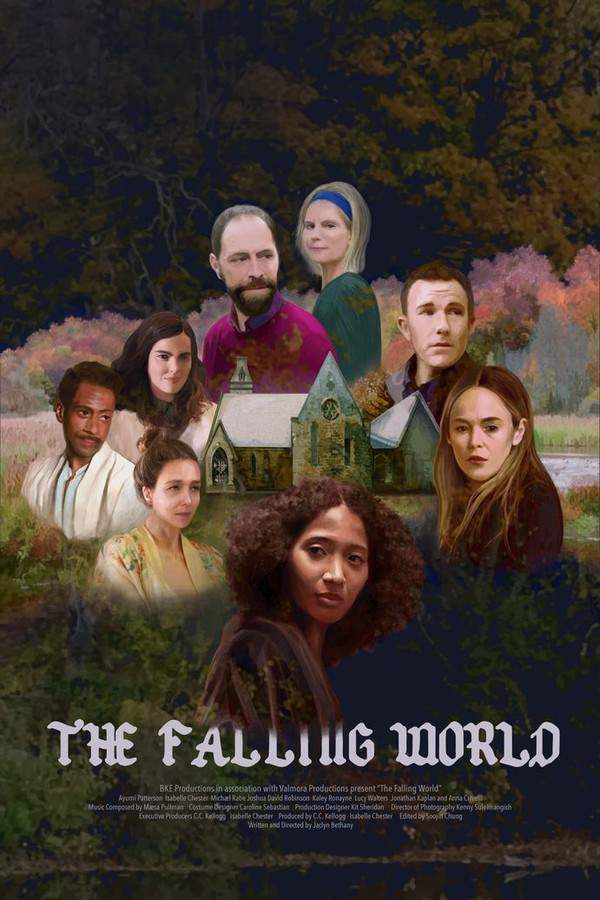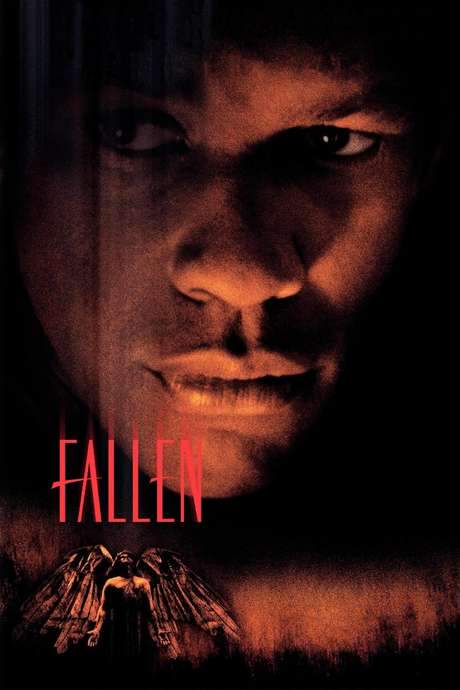The Fall 2008

During the 1920s in Los Angeles, a young girl confined to a hospital bed finds solace in the stories told by a captivating patient. He weaves a fantastical tale of vibrant landscapes and daring adventures, blending the people she cherishes into his thrilling narrative. As she listens, the lines between her reality and the imaginative world he creates become increasingly blurred, offering her an escape from her circumstances.
Does The Fall have end credit scenes?
No!
The Fall does not have end credit scenes. You can leave when the credits roll.
Meet the Full Cast and Actors of The Fall
Explore the complete cast of The Fall, including both lead and supporting actors. Learn who plays each character, discover their past roles and achievements, and find out what makes this ensemble cast stand out in the world of film and television.
External Links and Streaming Options
Discover where to watch The Fall online, including streaming platforms, rental options, and official sources. Compare reviews, ratings, and in-depth movie information across sites like IMDb, TMDb, Wikipedia or Rotten Tomatoes.
Ratings and Reviews for The Fall
See how The Fall is rated across major platforms like IMDb, Metacritic, and TMDb. Compare audience scores and critic reviews to understand where The Fall stands among top-rated movies in its genre.

64
Metascore
8.3
User Score

7.8 /10
IMDb Rating
Take the Ultimate The Fall Movie Quiz
Challenge your knowledge of The Fall with this fun and interactive movie quiz. Test yourself on key plot points, iconic characters, hidden details, and memorable moments to see how well you really know the film.
The Fall Quiz: Test your knowledge on the intriguing narrative and characters of 'The Fall' (2008).
What incident occurs at the beginning of the movie?
A botched stunt on a rickety bridge
An epic battle between stuntmen
A horse race gone wrong
A celebration of silent film
Show hint
Full Plot Summary and Ending Explained for The Fall
Read the complete plot summary of The Fall, including all major events, twists, and the full ending explained in detail. Explore key characters, themes, hidden meanings, and everything you need to understand the story from beginning to end.
The film begins with a striking black and white depiction of a chaotic 1920s silent movie set, where the aftermath of a stunt gone wrong unfolds, including the unsettling sight of a dead horse being hoisted from the water below.
In a rehabilitation hospital near Los Angeles, we meet Alexandria (Catinca Untaru), a lively 5-year-old girl of Romanian descent. Her arm is in a cast due to an accident in the orange grove where her immigrant family toils. While exploring the hospital’s grounds, Alexandria engages in a creative endeavor, crafting a note on delicate doily-like paper, which she accidentally drops. Instead of reaching Nurse Evelyn, whom she shares a special bond with, the note lands in the hands of another patient, Roy (Lee Pace), a Hollywood stuntman confined to a bed after becoming paralyzed from the waist down.
Curious about Alexandria’s identity, Roy lightly mocks the content of her note before Alexandria swiftly retrieves it and darts away. Determined to win her attention, Roy introduces a captivating story about Alexander the Great, humorously attributing her name to the famous conqueror. As Alexandria’s imagination ignites, she envisions a centurion wandering desolate lands. However, when Roy’s tale turns dire—Alexander lost without water—she becomes emotionally invested, asking, “Why?” This response prompts Roy to consider how to express the complexities of his tale in a way she may understand.
Their relationship grows as Roy enchants Alexandria with stories, cleverly trading tale-telling for morphine. Alexandria shares a close-knit rapport with Nurse Evelyn, who comforts her in distress, while secretly entangled in a romantic affair with a physician. The hospital setting becomes a source of fear for Alexandria as she encounters foreboding figures garbed in lead uniforms, embodying the unsettling realities of medical procedures.
As Alexandria continues her visits, Roy’s narrative unfolds, starting with a Hindi man’s plight to warn four prisoners of impending doom at the hands of the ruthless Governor Odious. Roy introduces a cast of characters—each reflecting Alexandria’s own experiences—beginning with Otta Benga, whom she imagines as a friendly ice-delivery man, recounting his revolt against the Governor after losing his brother.
Roy also paints the story of the Indian, who represents the essence of heartbreak and vengeance as he loses his beloved to Governor Odious’s cruel intentions. Not to be forgotten, Luigi, a munitions expert whom Alexandria visualizes as the peg-legged stunt double, joins the narrative alongside the real Charles Darwin, who finds a rare butterfly but is humiliated by the Governor. With Roy as the embodiment of the fierce Black Bandit, tasked with the rescue of his brother, Alexandria empathizes deeply, revealing her own loss when she shares about her father’s violent death at the hands of marauders.
The adventure thickens as Royal and the prisoners embark on a quest to overthrow Governor Odious, upheld by Alexandria’s visions. She participates, dressed as the Black Bandit, facilitating the tale’s journey while inadvertently becoming part of its victories and tragedies. Yet, their quest encounters dire challenges, leading to moments of despair when Alexandria, overcome by emotion, slips and suffers a critical injury, compelling a decisive shift in narrative focus.
Roy, in his turmoil, struggles to maintain potency in their shared escapism, battling his reality alongside the whimsical dangers of his tales as Alexandria urges him to persist. The two navigate through crises together, culminating in an intense climax where their intertwined fates reach a resolution, showing that even in the throes of defeat and despair, there lies the promise of hope and rebirth.
As the film draws to a close, Alexandria gracefully reflects on her journey home to the orange groves, harboring bittersweet memories of Roy, assuring herself of his wellbeing encapsulated in the world of film. Their connection—magnified by the spectacular visuals of silent movie montages—reminds viewers that the legacies of dreams, stories, and lost loves endure, woven into the fabric of cinema.
Uncover the Details: Timeline, Characters, Themes, and Beyond!

Coming soon on iOS and Android
The Plot Explained Mobile App
From blockbusters to hidden gems — dive into movie stories anytime, anywhere. Save your favorites, discover plots faster, and never miss a twist again.
Sign up to be the first to know when we launch. Your email stays private — always.
Discover Film Music Concerts Near You – Live Orchestras Performing Iconic Movie Soundtracks
Immerse yourself in the magic of cinema with live orchestral performances of your favorite film scores. From sweeping Hollywood blockbusters and animated classics to epic fantasy soundtracks, our curated listings connect you to upcoming film music events worldwide.
Explore concert film screenings paired with full orchestra concerts, read detailed event information, and secure your tickets for unforgettable evenings celebrating legendary composers like John Williams, Hans Zimmer, and more.


The Fall Themes and Keywords
Discover the central themes, ideas, and keywords that define the movie’s story, tone, and message. Analyze the film’s deeper meanings, genre influences, and recurring concepts.
The Fall Other Names and Titles
Explore the various alternative titles, translations, and other names used for The Fall across different regions and languages. Understand how the film is marketed and recognized worldwide.
Similar Movies To The Fall You Should Know About
Browse a curated list of movies similar in genre, tone, characters, or story structure. Discover new titles like the one you're watching, perfect for fans of related plots, vibes, or cinematic styles.
Quick Links: Summary, Cast, Ratings, More

What's After the Movie?
Not sure whether to stay after the credits? Find out!
Explore Our Movie Platform
New Movie Releases (2026)
Famous Movie Actors
Top Film Production Studios
Movie Plot Summaries & Endings
Major Movie Awards & Winners
Best Concert Films & Music Documentaries
Movie Collections and Curated Lists
© 2026 What's After the Movie. All rights reserved.

































